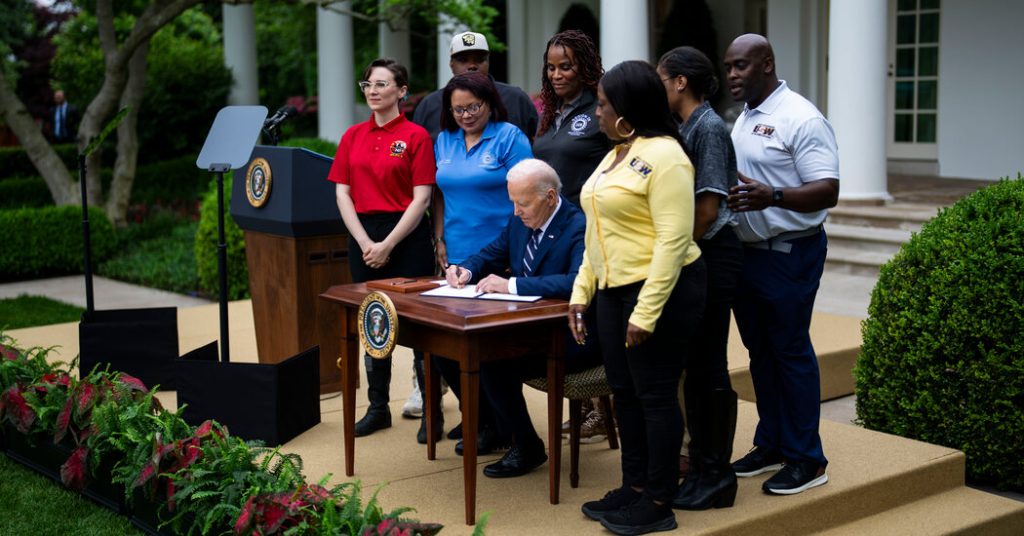In the first two decades of the 21st century, consumer products in the United States became less expensive due to a wave of imports from China and emerging economies. This led to the closure of American factories and the loss of over a million jobs, as companies flourished by selling low-cost goods made overseas. In response to this trend, the electorate elected presidents in 2016 and 2020 who promised to address the trade imbalance with China. Former President Donald J. Trump and President Joe Biden have both taken steps to revive American factories by making it more expensive to buy Chinese goods through tariffs on imports from industries that have been hollowed out due to global competition with China, such as clothes and appliances, as well as newer industries like solar panels.
President Biden’s recent decision to increase tariffs imposed by Trump signifies the end of an era that prioritized lower-cost products over the loss of manufacturing jobs. Both Democrats and Republicans are now moving away from the previous consensus on trade with China, focusing on issues like labor practices, intellectual property theft, and subsidies for overproducing factories in China. The future of America’s China policy remains uncertain, with different approaches being considered, such as strategic industrial policy or a more self-contained domestic economy.
While both Trump and Biden advocate for protectionism and limiting trade with China, they differ in their approaches. Trump wants to tear down commerce between the US and China, imposing higher tariffs and banning some Chinese goods altogether, while Biden aims to protect strategic industries like clean energy and semiconductors through tariffs and regulations. Economists have criticized both candidates’ plans, warning of potential negative consequences such as slower economic growth and decreased productivity from overspending on artificial domestic goods instead of innovative products.
Some Democrats believe that Biden’s best strategy for successful China trade policy is more spending on subsidies for high-tech manufacturing and stricter enforcement. They suggest coupling industrial policy spending with rules that require recipients of government grants to invest more in research and development and shift to new technologies like electric vehicles. While these efforts may face public backlash if they do not quickly drive down prices of American-made products, they are seen as crucial for maintaining America’s economic competitiveness.
The ongoing inflation crisis in the US adds further complexity to the debate over China trade policy, with concerns about higher prices affecting voters’ opinions and potentially influencing election outcomes. Both Biden and Trump are grappling with the challenge of balancing protectionism with economic growth and job creation. Economists suggest a return to more traditional views of trade policy, focusing on enforcing global rules, investing in innovation, and retraining workers displaced by global competition. However, there is little public support for such a policy, leading to uncertainty about the future direction of US-China trade relations. Despite the economic challenges and potential political fallout, policymakers are under pressure to find a sustainable long-term strategy for engaging with China while protecting American industries and jobs.


